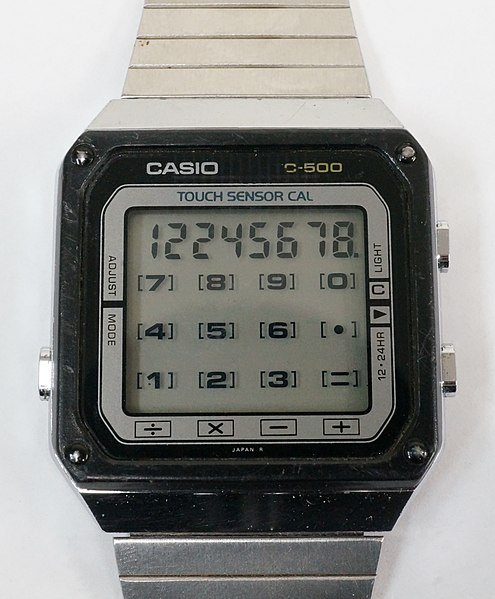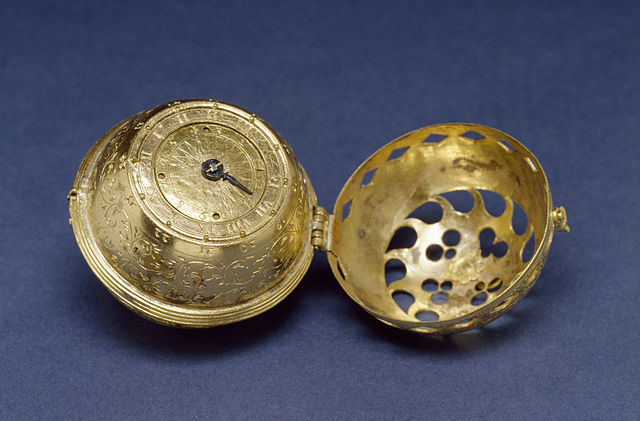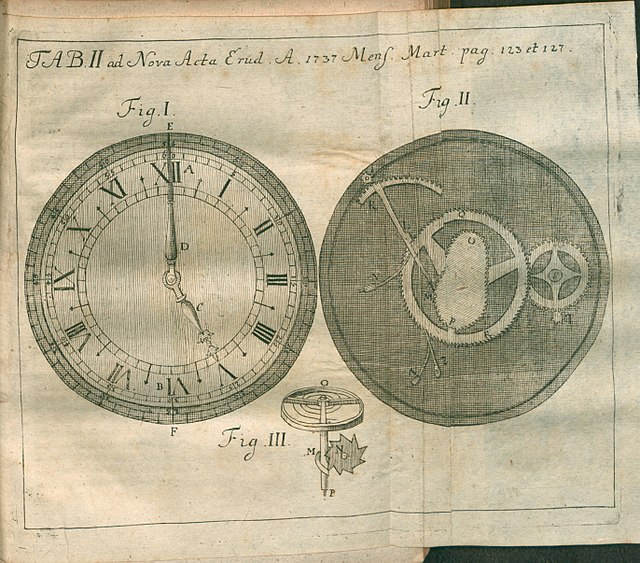A chronograph is a specific type of watch that is used as a stopwatch combined with a display watch. A basic chronograph has an independent sweep second hand and a minute sub-dial; it can be started, stopped, and returned to zero by successive pressure on the stem. More complex chronographs use additional complications and can have multiple sub-dials to measure seconds, minutes, hours and even fractions of a second. In addition, many modern chronographs use moveable bezels as tachymeters for rapid calculations of speed or distance. Louis Moinet invented the chronograph in 1816 for use in tracking astronomical objects. Chronographs were also used heavily in artillery fire in the mid to late 1800s. More modern uses of chronographs involve aircraft piloting, auto racing, diving and submarine maneuvering.
An Omega Speedmaster Professional, which is commonly regarded as one of the most iconic chronographs ever produced.
Gallet MultiChron Astronomic (c. 1959)—complex mechanical chronograph with 12-hour recording capabilities, automatic day, date, month, and moon phase display.
Tianjin Sea-Gull ST1901 chronograph movement (based on the Swiss Venus 175)
Miyota caliber 6S21 quartz chronograph movement
A watch is a portable timepiece intended to be carried or worn by a person. It is designed to keep a consistent movement despite the motions caused by the person's activities. A wristwatch is designed to be worn around the wrist, attached by a watch strap or other type of bracelet, including metal bands, leather straps, or any other kind of bracelet. A pocket watch is designed for a person to carry in a pocket, often attached to a chain.
A modern wristwatch featuring solar charging and Bluetooth capabilities
A 1983 Casio watch with touchscreen
A pomander watch from 1530, which once belonged to Philip Melanchthon and is now in the Walters Art Museum, Baltimore
A watch drawn in Acta Eruditorum, 1737








